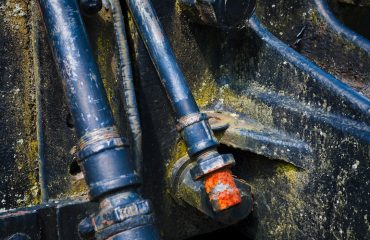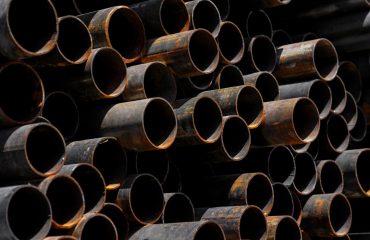Energy projects, from sprawling power plants to intricate oil and gas pipelines, rely heavily on the seamless and efficient transport of fluids. The selection of the right pipe is not merely a logistical detail; it’s a critical decision impacting safety, cost-effectiveness, and the long-term viability of the entire project. This comprehensive guide will delve into the key considerations for choosing the optimal piping system for your energy needs.
1. Material Selection: The Foundation of Pipeline Integrity
The choice of pipe material is paramount, dictated by factors such as the transported fluid, operating temperature and pressure, environmental conditions, and project budget. Common materials include:
- Steel: A workhorse in the energy industry, offering high strength and durability. Carbon steel is widely used for its cost-effectiveness, while alloy steels provide enhanced resistance to corrosion and high temperatures. Different grades of steel exist, each tailored to specific applications. For example, high-yield strength steel might be preferred for high-pressure applications, while stainless steel is crucial for corrosive environments.
- Plastic Pipes (PVC, HDPE, etc.): Lightweight and corrosion-resistant, plastic pipes are increasingly popular for low-pressure applications and non-corrosive fluids. High-density polyethylene (HDPE) is particularly suitable for gas distribution networks due to its flexibility and resistance to cracking.
- Ductile Iron: This material offers a good balance between strength, corrosion resistance, and cost. It’s frequently used in water distribution systems and some industrial applications within the energy sector.
- Copper: Known for its excellent corrosion resistance, copper piping is often used in smaller-scale applications and specialized systems requiring high purity.
Careful consideration of the material’s properties and long-term performance is crucial. Life cycle cost analysis, factoring in maintenance and replacement costs, should be a significant part of the material selection process.
2. Pressure Ratings and Flow Capacity: Ensuring Efficient Transport
Accurate pressure rating calculations are essential to prevent leaks, ruptures, and catastrophic failures. The pipe’s pressure rating (expressed in PSI or bar) must exceed the maximum operating pressure of the system. This involves careful consideration of the fluid’s pressure, temperature, and potential surges. Pressure testing is a crucial step in verifying the integrity of the installed pipeline.
Flow capacity, determined by the pipe’s diameter and the fluid’s viscosity, is equally important. Insufficient flow capacity can lead to bottlenecks, reduced efficiency, and increased energy consumption. Hydraulic calculations, often employing specialized software, are necessary to determine the optimal pipe diameter for the required flow rate. Factors like friction losses due to pipe roughness and bends must also be taken into account.
3. Diameter and Length Calculations: Optimizing System Design
The selection of pipe diameter is a complex interplay between flow rate requirements, pressure drop considerations, and cost optimization. Larger diameter pipes reduce friction losses and improve flow efficiency but come at a higher initial cost. Detailed hydraulic modeling is often employed to find the optimal balance between these competing factors. This modeling considers the entire pipeline network, including fittings, valves, and pumps, to accurately predict pressure drops and flow rates.
Pipe length impacts pressure drop and material costs. Minimizing the length of the pipeline is often desirable, but this needs to be balanced against the constraints of the terrain and other infrastructural considerations. Careful planning and surveying are crucial to optimize the pipeline’s route and minimize its length.
4. Compliance and Regulatory Standards: Meeting Legal Requirements
Energy projects are subject to stringent regulatory requirements, varying by location and the type of fluid being transported. Compliance with these standards is non-negotiable. These regulations often cover aspects such as material specifications, welding procedures, pressure testing protocols, and safety standards. Failure to meet these standards can result in significant penalties, project delays, and even safety hazards.
Understanding the applicable codes and standards (e.g., ASME, API, ASTM) is crucial. This requires expertise in relevant regulations and potentially the engagement of qualified engineers and inspectors to ensure compliance throughout the project lifecycle.
5. Cost Considerations: Balancing Initial Investment with Long-Term Operation
While the initial cost of the piping system is a significant factor, it’s crucial to consider the long-term operational costs. Factors such as maintenance, repairs, and potential replacements should be factored into the overall cost assessment. Materials with higher initial costs might offer superior durability and longevity, resulting in lower long-term maintenance expenses. A life-cycle cost analysis is essential to make informed decisions about material selection and system design.
The cost also includes installation, welding, testing, and potential remediation costs if problems arise. Proper planning and the selection of experienced contractors can help to minimize these costs.
Choosing the right pipe for energy projects is a multifaceted process demanding careful consideration of numerous technical and economic factors. By meticulously addressing the issues discussed in this guide, project managers and engineers can significantly enhance the safety, efficiency, and cost-effectiveness of their energy infrastructure.
SEO Tags:
Energy pipeline, pipe selection, pipeline materials, pressure rating, flow capacity




